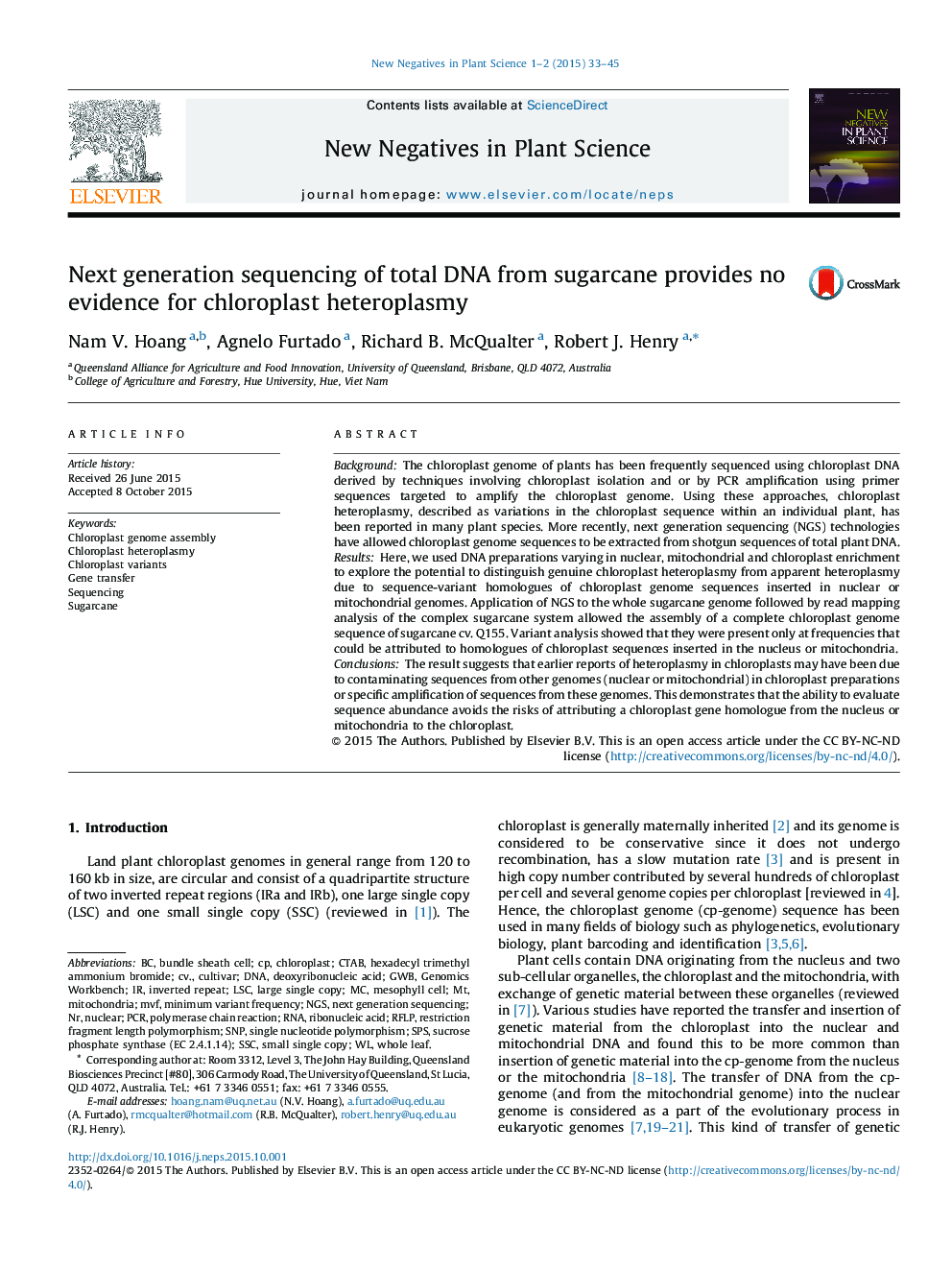| Article ID | Journal | Published Year | Pages | File Type |
|---|---|---|---|---|
| 2060971 | New Negatives in Plant Science | 2015 | 13 Pages |
BackgroundThe chloroplast genome of plants has been frequently sequenced using chloroplast DNA derived by techniques involving chloroplast isolation and or by PCR amplification using primer sequences targeted to amplify the chloroplast genome. Using these approaches, chloroplast heteroplasmy, described as variations in the chloroplast sequence within an individual plant, has been reported in many plant species. More recently, next generation sequencing (NGS) technologies have allowed chloroplast genome sequences to be extracted from shotgun sequences of total plant DNA.ResultsHere, we used DNA preparations varying in nuclear, mitochondrial and chloroplast enrichment to explore the potential to distinguish genuine chloroplast heteroplasmy from apparent heteroplasmy due to sequence-variant homologues of chloroplast genome sequences inserted in nuclear or mitochondrial genomes. Application of NGS to the whole sugarcane genome followed by read mapping analysis of the complex sugarcane system allowed the assembly of a complete chloroplast genome sequence of sugarcane cv. Q155. Variant analysis showed that they were present only at frequencies that could be attributed to homologues of chloroplast sequences inserted in the nucleus or mitochondria.ConclusionsThe result suggests that earlier reports of heteroplasmy in chloroplasts may have been due to contaminating sequences from other genomes (nuclear or mitochondrial) in chloroplast preparations or specific amplification of sequences from these genomes. This demonstrates that the ability to evaluate sequence abundance avoids the risks of attributing a chloroplast gene homologue from the nucleus or mitochondria to the chloroplast.
